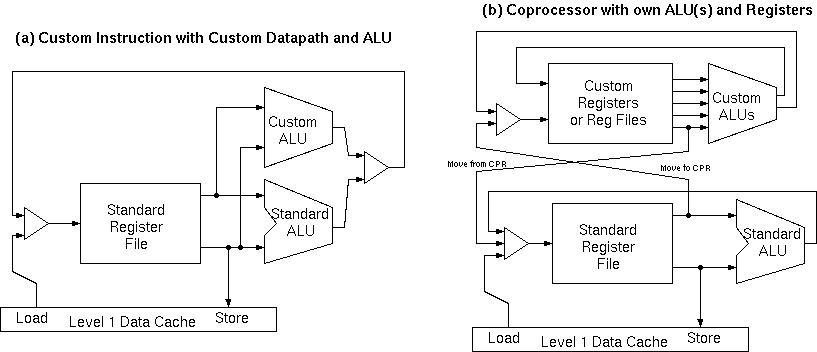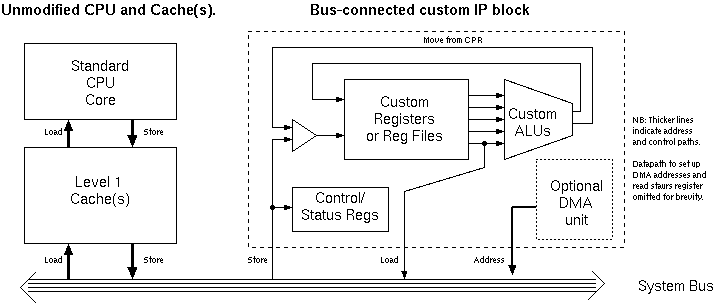
A custom ALU operation implemented in two similar ways: as a custom instruction or as a coprocessor.
Suppose something like the following fragment of code is a dominant consumer of power in a portable embedded mobile device:
for (int xx=0; xx<1024; xx++)
{
unsigned int d = Data[xx];
int count = 0;
while (d > 0) { if (d & 1) count ++; d >>= 1; }
if (!xx || count > maxcount) { maxcount = count; where = xx; }
}
This kernel tallies the set bit count in each word: such bit-level operations are inefficient using general-purpose CPU instruction sets.
Dedicated hardware avoids instruction fetch overhead and is generally more power efficient.
Analysis using Amdhal's law and high-level simulation (SystemC TLM) can establish whether a hardware implementation is worthwhile.
There are several feasible partitions:


The special hardware in all approaches may be manually coded in RTL or compiled using HLS from the original C implementation.
In the first two approaches, both the tally and the conditional update of the maxcount variable might be implemented in the hardware but most of the gain would come from the tally function itself and the detailed design might be different depending on whether custom instruction or coprocessor were used.
The custom instruction operates on data held in the normal CPU register file. The bit tally function alone reads one input word and yields one output word, so it easily fits within the addressing modes provided for normal ALU operations.
Performing the update of both the maxcount and word registers in one custom instruction would require two register file writes and this may not be possible in one clock cycle and hence, if this part of the kernel is placed in the custom datapath we might lean more towards the co-processor approach.
Whether to use the separate IP block really depends on whether the processor has something better to do in the meantime and that there is sufficient bus bandwidth for them both to operate.
With increasing available transistor count in the form of dark silicon (ie.\ switched off most of the time) in recent and future VLSI, implementing standard kernels as custom hardware cores is a potential major trend for power conservation: sometimes called conservation cores.
| 3: (C) 2008-15, DJ Greaves, University of Cambridge, Computer Laboratory. |